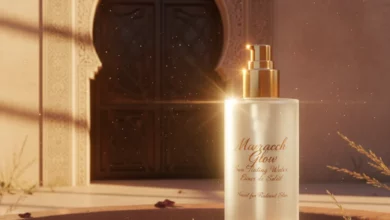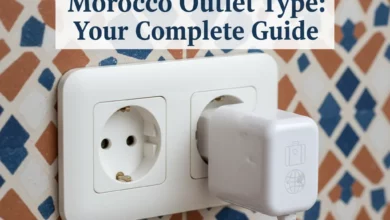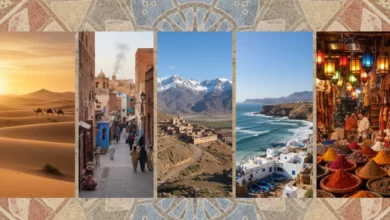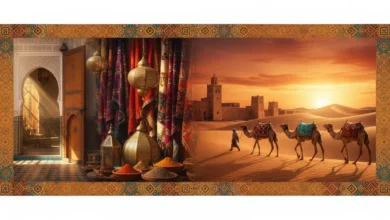Ultimate Guide: Things to Do in Marrakech Morocco
Discover the Magic of the Red City – Your Complete Travel Guide to Marrakech’s Best Attractions, Experiences & Hidden Gems
Updated October 2025 | Expert Local Insights
Introduction to Marrakech
Marrakech, the enchanting “Red City” of Morocco, stands as one of North Africa’s most captivating destinations. Founded in 1062, this former imperial capital seamlessly blends centuries of rich history with vibrant modern culture. From the bustling energy of Jemaa el-Fna square to the serene beauty of Jardin Majorelle, Marrakech offers an unforgettable sensory experience that captivates millions of visitors annually.
Whether you’re wandering through the labyrinthine souks, admiring breathtaking Moroccan architecture, or embarking on adventures to the nearby Atlas Mountains and Sahara Desert, Marrakech promises experiences that will stay with you long after your journey ends. This comprehensive guide reveals the best things to do in Marrakech, combining must-see attractions with insider tips to help you make the most of your visit.
🎯 Pro Tip: For an authentic and personalized experience exploring Marrakech, consider booking a licensed tour guide. Mouhssine ELIOUJ, a Ministry of Tourism certified guide (License Number on file), offers expert local insights and customized tours that unveil both famous landmarks and hidden treasures of the Red City.
🏛️ Top 10 Must-Visit Attractions in Marrakech
1. Jemaa el-Fna Square – The Heart of Marrakech
⏰ Best Time: Evening (after sunset) | 💰 Cost: Free | ⌚ Duration: 2-3 hours
Designated as a UNESCO World Heritage site, Jemaa el-Fna is arguably the most famous square in all of Africa. This electric gathering place transforms throughout the day, offering different experiences from morning to midnight. During daylight hours, you’ll encounter orange juice vendors displaying pyramids of fresh citrus, snake charmers with their mesmerizing cobras, traditional water sellers in colorful costumes, and henna artists offering intricate designs.
As the sun sets, the square undergoes a magical metamorphosis. Dozens of food stalls materialize, serving authentic Moroccan specialties including tagines, couscous, grilled meats, and harira soup. Street musicians, storytellers performing in Arabic, acrobats, and traditional Gnaoua musicians create an atmosphere of controlled chaos that epitomizes Marrakech’s vibrant spirit.
🎯 Insider Tip: For the best view of the square, head to one of the surrounding rooftop cafés like Café de France or Café Glacier. Enjoy mint tea while watching the sunset and listening to the call to prayer from nearby mosques – a quintessential Marrakech moment.
2. Bahia Palace – A Masterpiece of Moroccan Architecture
⏰ Best Time: Early morning (9-11 AM) | 💰 Cost: 70 MAD | ⌚ Duration: 1-2 hours
Built in the 1860s and expanded in the late 1890s, Bahia Palace lives up to its name, which translates to “brilliance” in Arabic. This stunning 19th-century palace showcases the pinnacle of Moroccan craftsmanship with its intricate zellige tilework, hand-carved cedar wood ceilings, Italian marble floors, and elaborate stucco work.
Originally constructed as a residence for Si Moussa, the grand vizier of the Sultan, and later expanded by his son Ba Ahmed, the palace features over 150 rooms surrounding multiple courtyards and gardens. The architecture beautifully demonstrates the traditional Moroccan design principle where homes face inward for privacy, with rooms opening onto interior courtyards adorned with fountains, orange trees, and fragrant jasmine.
📸 Photo Opportunity: The main courtyard with its geometric tile patterns and the ornate reception rooms provide Instagram-worthy shots. Visit early to avoid crowds and capture the morning light filtering through the colored glass windows.
3. Jardin Majorelle – Yves Saint Laurent’s Oasis
⏰ Best Time: Opening time (8:30 AM) | 💰 Cost: 170 MAD (Garden) | ⌚ Duration: 1.5-2 hours
Created by French artist Jacques Majorelle in the 1920s and later restored by fashion designer Yves Saint Laurent and Pierre Bergé in the 1980s, this botanical garden is a peaceful escape from Marrakech’s bustling streets. The garden’s most striking feature is the iconic electric-cobalt blue villa, painted in what’s now known as “Majorelle Blue,” creating a stunning contrast against the lush greenery.
Wandering through the garden, you’ll discover an impressive collection of cacti, bamboo groves, palm trees, bougainvillea, and water features including decorative fountains and lily ponds. The site also houses the Berber Museum, showcasing traditional Berber jewelry, costumes, and artifacts, as well as the nearby Yves Saint Laurent Museum dedicated to the designer’s life and work.
⚠️ Important Note: Jardin Majorelle is extremely popular and becomes crowded quickly. Book your timed entry ticket online in advance and arrive right at opening (8:30 AM) for a more peaceful experience and better photos without crowds.
4. Ben Youssef Madrasa – North Africa’s Largest Islamic School
⏰ Best Time: Morning (9-10 AM) | 💰 Cost: 70 MAD | ⌚ Duration: 1 hour
Founded in the 14th century and rebuilt in the 16th century, Ben Youssef Madrasa was once the largest Islamic school in North Africa, housing up to 900 students who studied Islamic law, jurisprudence, and Quranic readings. After years of closure for extensive renovations, this architectural jewel reopened in 2022, revealing its magnificently restored beauty.
The madrasa exemplifies the finest traditions of Moroccan-Andalusian architecture. Every surface is adorned with intricate decoration: hand-carved cedar wood, colorful zellige tiles forming geometric patterns, delicate stucco plasterwork with Arabic calligraphy, and Italian marble columns. The central courtyard with its reflective pool creates a serene atmosphere, while the tiny student cells on the upper floors offer glimpses into the austere lives of medieval scholars.
🎨 Architecture Highlight: Don’t miss the intricately carved cedar wood doors and the stunning stalactite muqarnas decorating the archways. The level of craftsmanship is extraordinary, making this one of the most Instagrammable locations in Marrakech.
5. Koutoubia Mosque – Marrakech’s Iconic Landmark
⏰ Best Time: Sunset for exterior viewing | 💰 Cost: Free (non-Muslims cannot enter) | ⌚ Duration: 30 minutes
Dominating Marrakech’s skyline at 77 meters (253 feet) tall, the Koutoubia Mosque minaret serves as both the city’s most recognizable symbol and a practical navigation landmark. Built in the 12th century during the Almohad dynasty, this architectural masterpiece inspired similar designs across the Islamic world, including the Giralda tower in Seville, Spain, and Hassan Tower in Rabat.
The name “Koutoubia” derives from the Arabic word for “booksellers,” as the area around the mosque once housed numerous manuscript dealers and book vendors. While the mosque itself is closed to non-Muslims, visitors can appreciate its stunning exterior and explore the surrounding garden plaza with its beautiful fountains, rose gardens, and palm trees.
🌅 Best Experience: Visit the gardens in early evening when the setting sun bathes the minaret in golden light. The call to prayer (adhan) at sunset creates a deeply atmospheric moment that captures the spiritual essence of Marrakech.
6. Saadian Tombs – Hidden Royal Necropolis
⏰ Best Time: Early morning (9-10 AM) | 💰 Cost: 70 MAD | ⌚ Duration: 1 hour
📍 Location: Rue de la Kasbah | 🕐 Hours: Daily 9:00 AM – 5:00 PM
Hidden for centuries and rediscovered in 1917, the Saadian Tombs house over 60 members of the influential Saadi dynasty that ruled Morocco during the 16th and 17th centuries. Sultan Moulay Ismail sealed these tombs when he moved the capital to Meknes, inadvertently preserving them in remarkable condition for future generations.
The main attraction is the Hall of Twelve Columns, containing the tomb of Sultan Ahmad al-Mansur and his family. The space features twelve marble columns imported from Italy, walls adorned with Italian Carrara marble, intricate geometric patterns, stunning Arabic calligraphy, and delicate cedar wood carvings. The craftsmanship represents the pinnacle of Saadian artistic achievement.
7. El Badi Palace – The Incomparable Ruins
⏰ Best Time: Late afternoon | 💰 Cost: 70 MAD | ⌚ Duration: 1-1.5 hours
🕐 Hours: Daily 9:00 AM – 5:00 PM (10:00 AM – 4:00 PM during Ramadan)
Built between 1578 and 1594 by Sultan Ahmad al-Mansur to celebrate victory over Portuguese forces at the Battle of the Three Kings, El Badi Palace (meaning “The Incomparable”) was once considered one of the world’s most magnificent structures. Constructed with materials imported from Italy, Mali, India, and China, including gold, turquoise, and crystal, it featured over 360 rooms.
Today, though stripped of its treasures by Sultan Moulay Ismail in the late 17th century, the vast ruins still convey the palace’s former grandeur. The immense courtyard (135 by 110 meters) with its sunken gardens, reflecting pools, and pavilions provides a fascinating glimpse into Saadian opulence. The palace also houses the magnificent Koutoubia Minbar, an 12th-century carved cedar pulpit adorned with gold and silver.
🏰 Don’t Miss: Climb to the ramparts for spectacular panoramic views over Marrakech’s ochre rooftops and the Atlas Mountains. The palace is also home to numerous storks that nest atop the walls, adding a living element to these ancient ruins.
8. Marrakech Souks – A Shopping Paradise
⏰ Best Time: Morning (9 AM – 1 PM) | 💰 Cost: Free to explore | ⌚ Duration: 3-4 hours
Extending north from Jemaa el-Fna, the Marrakech Souks form a labyrinthine network of narrow alleyways filled with thousands of shops and stalls. This is where you’ll find Morocco’s famous handicrafts: hand-woven Berber carpets, leather goods from the tanneries, brass lanterns, colorful ceramics, aromatic spices, argan oil products, traditional clothing, and intricate metalwork.
The souks are organized by trade, with dedicated areas for different crafts. Visit the leather souk for bags and babouches (traditional slippers), the spice souk for saffron and ras el hanout, the textile souk for colorful fabrics, and the metalwork souk where artisans hammer away creating lanterns and teapots. Getting lost in this maze is part of the adventure—all paths eventually lead back to Jemaa el-Fna.
💰 Haggling Tips: Bargaining is expected and part of the cultural experience. Start at about 40-50% of the initial asking price. Be friendly but firm, and don’t hesitate to walk away—sellers often call you back with better offers. Always compare prices at multiple shops before committing to a purchase.
9. Le Jardin Secret – A Hidden Garden Sanctuary
⏰ Best Time: Mid-morning (10 AM – 12 PM) | 💰 Cost: 100 MAD | ⌚ Duration: 1-1.5 hours
🕐 Hours: Daily 9:30 AM – 6:00 PM
A peaceful alternative to the crowded Jardin Majorelle, Le Jardin Secret (The Secret Garden) offers an authentic escape within the medina. Dating back to the Saadian dynasty, this beautifully restored complex features two distinct gardens: the Islamic Garden with traditional Moroccan plants and the Exotic Garden showcasing species from around the world.
The gardens demonstrate traditional Islamic garden design principles with geometrically arranged water channels, fountains, and carefully selected plant species. Visitors can also climb the tower for panoramic views over the medina, enjoy the on-site café (though pricey), and learn about the ancient khettara irrigation system that still waters the gardens.
10. Mellah – The Historic Jewish Quarter
⏰ Best Time: Morning | 💰 Cost: Free to explore | ⌚ Duration: 1-2 hours
Established in 1537 following the mass exile of Jews from Spain, the Mellah (Jewish Quarter) once housed approximately 35,000 Jewish residents and 40 synagogues. This historic district offers insight into Marrakech’s multicultural heritage and the significant contributions of the Jewish community to the city’s development.
The architecture differs from other medina areas—windows face the street (unlike traditional Muslim homes that face inward), and buildings feature distinctive wooden balconies. Visit the Lazama Synagogue, explore the large Jewish Cemetery with its white tombs, and discover the spice market within the Mellah. Though the Jewish population has significantly decreased, their historical presence remains an important part of understanding Marrakech’s diverse cultural tapestry.
🚗 Best Day Trips from Marrakech
While Marrakech offers endless attractions within the city, some of Morocco’s most spectacular experiences lie just beyond its walls. From mountain villages to coastal towns and desert landscapes, these day trips provide diverse perspectives on Moroccan culture and natural beauty.
🏔️ Atlas Mountains & Berber Villages
📍 Distance: 65 km (40 miles) | ⏱️ Duration: Full day (7-8 hours) | 💰 Cost: From $30-40 per person
The High Atlas Mountains rise majestically on Marrakech’s horizon, visible from many points in the city. A day trip to these mountains offers breathtaking scenery, authentic Berber culture, and a refreshing escape from urban heat. Most tours explore the Ourika Valley, known for its terraced gardens, traditional villages, and stunning waterfalls.
Typical Itinerary Highlights:
- Visit a Berber women’s cooperative to learn about argan oil production
- Hike to the Setti Fatma waterfalls (approximately 1-2 hours round trip)
- Enjoy traditional Berber lunch in a family home or mountain restaurant
- Explore authentic Berber villages and learn about mountain lifestyle
- Take in spectacular views of Mount Toubkal (4,167m), North Africa’s highest peak
- Drive through the scenic Asni Valley and traditional markets
👟 What to Bring: Comfortable hiking shoes, layers of clothing (mountains are cooler), sunscreen, water bottle, and camera. The waterfall hike involves some scrambling over rocks, so be prepared for moderate physical activity.
💦 Ouzoud Waterfalls – North Africa’s Highest Cascades
📍 Distance: 160 km (100 miles) | ⏱️ Duration: Full day (9-10 hours) | 💰 Cost: From $25-35 per person
Located in the Middle Atlas Mountains, the Ouzoud Waterfalls (Cascades d’Ouzoud) plunge an impressive 110 meters (360 feet) into turquoise pools below, creating one of Morocco’s most spectacular natural attractions. The three-tiered cascades are surrounded by lush olive groves, fig trees, and wild oleander, creating an oasis of natural beauty.
Experience Highlights:
- Hike down the network of trails offering multiple viewpoints of the falls
- Encounter playful Barbary macaque monkeys in their natural habitat
- Take an optional boat ride to get up close to the cascading water
- Enjoy lunch at restaurants with terrace views overlooking the waterfalls
- Cool off with a refreshing swim in the natural pools (seasonal)
- Visit traditional Berber villages and ancient water mills along the route
- Stop at Imi-n-Ifri natural bridge on the return journey
🐒 Wildlife Tip: The Barbary apes are wild animals. Keep your belongings secure and don’t feed them. They’re curious and may try to grab food or shiny objects. Your guide will help you safely observe and photograph these endangered primates.
🌊 Essaouira – The Pearl of the Atlantic
📍 Distance: 190 km (120 miles) | ⏱️ Duration: Full day (11 hours) | 💰 Cost: From $25-45 per person
This charming coastal city, formerly known as Mogador, offers a refreshing contrast to Marrakech’s intensity. Essaouira is a UNESCO World Heritage site known for its relaxed atmosphere, whitewashed buildings with blue shutters, impressive ramparts, and miles of pristine beach. The city attracted artists like Jimi Hendrix and Orson Welles, drawn by its bohemian vibe and natural beauty.
What to Experience:
- Explore the UNESCO-listed medina with its artistic galleries and craftsmen
- Walk along Skala de la Kasbah, the seafront fortification with ocean views
- Visit the bustling fishing port to see the daily catch and blue boats
- Savor fresh grilled seafood at harbor restaurants
- Shop for thuya wood handicrafts, a local specialty
- Stroll along the expansive sandy beach
- Stop at argan oil cooperatives en route
- Spot goats climbing argan trees (seasonal and depends on location)
🍽️ Culinary Highlight: Don’t miss trying Essaouira’s famous fresh seafood. Head to the fishing port where small grill stations cook your choice of fish, prawns, calamari, and more. It’s affordable, authentic, and delicious—a true taste of Morocco’s Atlantic coast.
🏜️ Agafay Desert – Morocco’s Stone Desert
📍 Distance: 40 km (25 miles) | ⏱️ Duration: Half day or evening | 💰 Cost: From $35-80 per person
Can’t make it to the Sahara but want a desert experience? The Agafay Desert, just 30-40 minutes from Marrakech, offers a rocky, lunar-like landscape that provides an authentic desert atmosphere without the long journey. This stone desert features undulating hills, Berber villages, and stunning Atlas Mountain backdrops.
Popular Activities:
- Camel riding across the rocky terrain (20-30 minutes)
- Quad biking adventures through desert landscapes (1 hour+)
- Sunset watching with traditional mint tea ceremony
- Traditional Moroccan dinner under the stars in Berber tents
- Live Berber music and fire show performances
- Stargazing in the clear desert night sky
- Day pass options at desert camps with pool access
🌟 Recommended Tour: Sunset dinner experiences are particularly magical. You’ll enjoy camel rides, watch the sun set over the Atlas Mountains, dine on traditional tagine and couscous, and experience authentic Berber hospitality. Perfect for those with limited time who still want a desert adventure.
🎭 Authentic Cultural Experiences in Marrakech
🧖 Traditional Moroccan Hammam – Essential Wellness Ritual
⏱️ Duration: 1-2 hours | 💰 Cost: 130-500 MAD (public to luxury)
The hammam (Moroccan bath) is an integral part of Moroccan culture, originating from Roman thermal baths and adapted through Islamic traditions. This purifying ritual offers deep cleansing, relaxation, and cultural immersion that goes beyond typical spa treatments.
The Traditional Hammam Process:
- Steam room – Relax in warm room to open pores and prepare skin
- Black soap application (savon noir) – Natural olive oil-based soap
- Vigorous exfoliation – Using kessa glove to remove dead skin
- Ghassoul clay mask – Mineral-rich Moroccan clay treatment
- Argan oil massage – Nourishing oil application
- Relaxation chamber – Cool down with mint tea and rest
Two Options Available:
- Public Hammams – Authentic local experience (10-100 MAD), gender-separated, bring your own supplies, more basic facilities but culturally immersive
- Private Spa Hammams – Luxurious setting (250-500 MAD+), all products provided, often in riads or hotels, includes additional treatments like massage, more comfortable for tourists
💡 First-Timer Tips: Expect vigorous scrubbing—it’s supposed to be intense! Bring or wear swimwear (requirements vary). Drink plenty of water afterward. Schedule it mid-trip to enjoy the benefits for the rest of your stay. Popular spots include Hammam de la Rose, Les Bains d’Orient, and heritage hammams in luxury hotels.
👨🍳 Moroccan Cooking Class – Master Traditional Cuisine
⏱️ Duration: 3-4 hours | 💰 Cost: 400-500 MAD (€40-50) per person
Learning to cook Moroccan cuisine is one of the most rewarding experiences in Marrakech. These hands-on classes teach you to create authentic dishes you can recreate at home, providing not just recipes but insight into Moroccan culinary traditions, spice blends, and cooking techniques passed down through generations.
Typical Class Experience:
- Market tour – Shop for fresh ingredients in local souks with your chef
- Spice introduction – Learn about ras el hanout, saffron, cumin, and other essential spices
- Hands-on preparation – Make multiple dishes including tagine, couscous, and salads
- Bread making – Prepare traditional Moroccan bread (khobz) or msemen crepes
- Traditional techniques – Master the tagine cooking method and couscous steaming
- Shared meal – Enjoy the feast you’ve created with fellow participants
- Recipe booklet – Take home recipes and cooking tips
Popular Dishes You’ll Learn:
- Chicken tagine with preserved lemons and olives
- Lamb tagine with prunes and apricots
- Moroccan salads (zaalouk, taktouka)
- Royal couscous with seven vegetables
- Pastilla (sweet and savory pie)
- Traditional Moroccan desserts with orange blossom
⭐ Highly Recommended: Chef Laila’s cooking class and Chef Khmisa’s class both receive outstanding reviews. Classes accommodate vegetarians and vegans. Book in advance as popular classes fill quickly. Morning or lunch time slots are typically available.
🌅 Sunset from a Rooftop Terrace – Magical Marrakech Moment
⏱️ Best Time: 30 minutes before sunset | 💰 Cost: Price of drinks (30-100 MAD)
Watching the sunset from a Marrakech rooftop while sipping mint tea and listening to the evening call to prayer (adhan) echoing from multiple mosques is a quintessential experience. The city’s ochre buildings glow golden in the fading light, creating an atmospheric moment that captures Marrakech’s spiritual essence.
Best Rooftop Spots:
- Café de France – Classic spot overlooking Jemaa el-Fna, can be crowded
- Le Salama – Romantic setting with Atlas Mountain views
- Café Glacier – Multiple terraces with excellent square views
- Nomad – Modern rooftop restaurant with stylish ambiance
- Dar Anika – Intimate riad terrace with candlelight
- Your riad’s rooftop – Many offer private terrace access
🗺️ Get Lost in the Medina – Embrace the Labyrinth
⏱️ Duration: 2-4 hours | 💰 Cost: Free | ⚠️ Difficulty: Easy to moderate
One of the most authentic experiences in Marrakech is simply wandering the medina’s maze-like alleyways without a specific destination. The UNESCO-listed old city contains over 9,000 lanes, creating a labyrinth where getting “lost” is part of the adventure. Trust that all paths eventually lead back to Jemaa el-Fna or another recognizable landmark.
What You’ll Discover:
- Hidden workshops where artisans practice traditional crafts
- Neighborhood bakeries producing fresh bread
- Small neighborhood mosques and shrines
- Local food stalls frequented by residents
- Quiet residential areas away from tourist crowds
- Unexpected architectural details and historic doors
- Daily life scenes – children playing, neighbors chatting
🧭 Navigation Tips: Download Maps.me or Google Maps offline. Take photos of distinctive landmarks. Ask locals for directions – “Jemaa el-Fna?” usually gets you oriented. Mornings (9-11 AM) offer the best light and cooler temperatures. Bring water and wear comfortable shoes.
🌙 Nightlife & Evening Entertainment in Marrakech
Marrakech transforms after dark, offering diverse nightlife options from traditional cultural experiences to modern European-style clubs. The city presents two distinct nightlife faces: the traditional medina with its cultural entertainment and the new city (Gueliz and Hivernage) with contemporary bars and nightclubs.
Traditional Medina Evening Experience
The medina offers an authentic, family-friendly evening atmosphere centered around Jemaa el-Fna square. After sunset, the square comes alive with food stalls, street performers, storytellers, and musicians creating an electric carnival atmosphere. Most medina establishments close by 10-11 PM, and alcoholic beverages are difficult to find.
Popular Medina Evening Spots:
- Café Arabe – Rooftop restaurant and cocktail bar with terrace
- Le Salama – Romantic setting with candlelight and mountain views
- Dar Anika – Intimate riad atmosphere
- Kosybar – Trendy spot with river terrace views
- Le Bistro Arabe – Live jazz nightly (8-11 PM) by the pool
Modern Nightlife: Gueliz & Hivernage Districts
For European-style nightlife with clubs, bars, and late-night entertainment, head to the Gueliz and Hivernage neighborhoods west of the medina. These areas offer trendy cafés, restaurants, cocktail bars, and nightclubs that stay open until 3-4 AM.
Top Nightclubs in Marrakech:
- Pacha Marrakech – Africa’s largest nightclub (capacity 3,000), multiple dance floors, pool, international DJs
- Theatro – Former theater converted to nightclub, world-class DJ sets, upscale atmosphere
- 555 Famous Club – Hosts international artists (Akon, Tyga, Snoop Dogg), themed nights
- Silver – Ibiza-style club in Hivernage, renowned dancers and DJs
- Nikki Beach – Beach club atmosphere in the palm grove, pools and cabanas
- Montecristo – Restaurant-turned-club with rooftop terrace, chill-out ambiance
Bars & Lounges:
- Le Bar Churchill – 1930s cocktail bar with jazz, leopard-print décor, dress code
- Café du Livre – Library-bookstore-bar combo, trivia Mondays, live music weekends
- So Lounge – Upscale cocktail bar with DJ
- Lawrence Bar – Speakeasy-style bar
💡 Nightlife Tips & Important Information
- Dress Code: Clubs typically require smart casual – men should wear pants and collared shirts, women can dress more freely
- Entry Fees: Expect $10-20 cover charges at major clubs
- Safety: Marrakech is generally safe at night, but take taxis when returning late to the medina
- Alcohol: Available in new city establishments and some medina hotels/restaurants; very limited in traditional medina
- Age Restrictions: 18+ for clubs and bars
- Transportation: Use official taxis or ride-sharing apps; agree on fares beforehand
✈️ Practical Travel Tips for Marrakech
📅 Best Time to Visit Marrakech
Peak Season (March-May & September-November): Pleasant temperatures (20-28°C/68-82°F), ideal weather for sightseeing, higher prices, more crowds
Summer (June-August): Very hot (35-45°C/95-113°F), fewer tourists, lower prices, best for pool days and evening activities
Winter (December-February): Cooler (10-20°C/50-68°F), occasional rain, perfect for Atlas Mountains with snow, good deals on accommodation
🚕 Getting Around Marrakech
- Within the Medina: Walking only – vehicles cannot access most areas
- Petit Taxis: Small cream-colored cabs (max 3 passengers), metered but negotiate or insist on meter
- Grand Taxis: Larger vehicles for longer journeys or groups
- Calèches: Horse-drawn carriages (touristy, negotiate price beforehand)
- Ride Apps: Careem and Uber-like services available
- Public Buses: Cheap but crowded, primarily used by locals
💰 Money & Budget Tips
Currency: Moroccan Dirham (MAD/DH). Approx. 10 MAD = $1 USD or €1 EUR (rates vary)
Daily Budget Estimates:
- Budget: $30-50 (hostels, street food, public transport)
- Mid-range: $80-150 (riad accommodation, restaurant meals, guided tours)
- Luxury: $200+ (5-star hotels, fine dining, private experiences)
Payment: Cash preferred in souks and small establishments. Cards accepted at hotels, restaurants, and shops. ATMs widely available.
Tipping: 10-15% at restaurants, 20-50 MAD for guides, small amounts (5-10 MAD) for helpful service
🕌 Cultural Etiquette & Respect
- Dress Modestly: Cover shoulders and knees, especially in religious areas. Women should carry a scarf
- Photography: Always ask permission before photographing people. Never photograph military/police
- Mosques: Non-Muslims cannot enter active mosques (except Hassan II in Casablanca)
- Greetings: “Salam alaikum” (peace be upon you) is a respectful greeting
- Public Affection: Keep physical contact minimal in public
- Ramadan: During fasting month, avoid eating/drinking publicly during daylight hours
- Language: Arabic and French widely spoken. Learn basic Arabic phrases – greatly appreciated
🗣️ Essential Arabic Phrases
Thank you: Shukran
Please: Min fadlik
Yes/No: Na’am / La
Excuse me: Smehli
Goodbye: Beslama
I don’t understand: Ma fhemtsh
📌 Final Travel Tips
- Stay in a traditional riad within the medina for authentic atmosphere
- Download offline maps before exploring the labyrinthine medina
- Visit main attractions early morning to avoid crowds and heat
- Carry small bills for purchases and tipping
- Stay hydrated—always carry water, especially in summer
- Book popular experiences (Jardin Majorelle, cooking classes) in advance
- Allow time to simply wander and absorb the atmosphere
- Be patient with haggling—it’s part of the cultural experience
- Travel insurance recommended for peace of mind
- Respect local customs and dress modestly for a more positive experience




